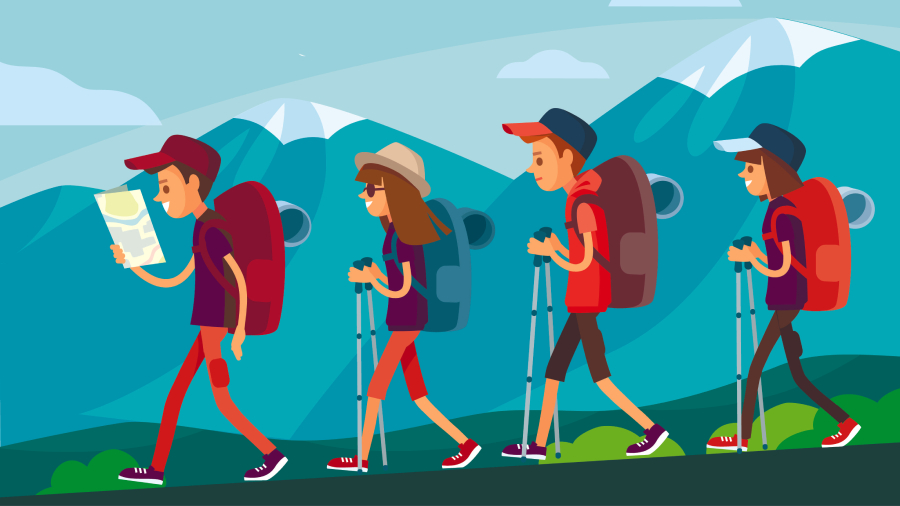Hiking is a physical activity with both physical and mental benefits. It can improve your physical fitness and help you relax. You may need many different skills for any particular sport, and each sport, including hiking, has its unique skills. If you can master the skills of hiking, you can diminish energy loss and minimise the chance of getting hurt. Here are some hiking tips by Enjoy Hiking:

Uphill
- Maintain a natural pace and avoid making very large strides.
- Avoid climbing at high speed. Don't rest too frequently or for too long. When you feel tired, slow down instead of stopping.
- Tread only on secure stable ground, where there is enough foot room.
- Use the strength of your legs to climb. Avoid pulling yourself up by grasping small trees or branches, as they may break leading to a fall.
- Keep your upper body straight.
- When going up very steep slopes, don't go straight ahead. Move sideways and work your up in a series of zigzags.
Downhill
- Never run downhill ―this is a certain way to have a dangerous fall.
- Tread only on secure stable ground, with enough foot room.
- Avoid treading on wet slippery ground, especially wet clay or grasses. But if there is no other way, proceed with caution and keep your body low.
- Use the strength of your legs to descend. Avoid sliding down by grasping small trees or branches. This indicates you are half out of control. Branches can break and, even if they don't, you will damage the vegetation.
- Keep your upper body straight.
- When moving down very steep slopes, move sideways and work down in a series of zigzags.

Food and Drink
- Never eat or drink while moving.
- Relax to take refreshments. Don't hurry with your food or drink.
- Never drink untreated water from hill streams or eat any wild plants or mushrooms.
- Don't consume icy drinks immediately after a long hike, when your body temperature is still high.
- Never drink alcohol during a hike.
Foot Care
- Wear suitable hiking shoes. Wear new shoes on level ground a few times before going on a serious hike. This will ensure the surface material is soft and the shoes are comfortably worn in to the shape of your feet. Bootlaces should not be too tight.
- Wear two pairs of socks made of soft, fluffy and absorbent material.
- Trim your toenails, and try to keep your feet clean and dry. Stop walking if your feet are uncomfortable. Inspect them and treat any wounds promptly.
- If there are signs of blisters, put a plaster on the affected area.
- Blisters should be dressed with an absorbent plaster that eliminates moisture.
- Serious blisters should be treated with antiseptic. Pierce the blisters with a sterile pin and squeeze out any moisture. Avoid touching the wounds directly, and cover them with an antiseptic dressing right away.
- For soreness or cramps in the legs, massage the leg muscles. If possible, soak feet in warm water, or use a menthol-based heat rub ointment.

Moreover, to be well prepared for your next hiking trip, you may check out the following website for more information.
Source: AFCD Enjoy Hiking website






